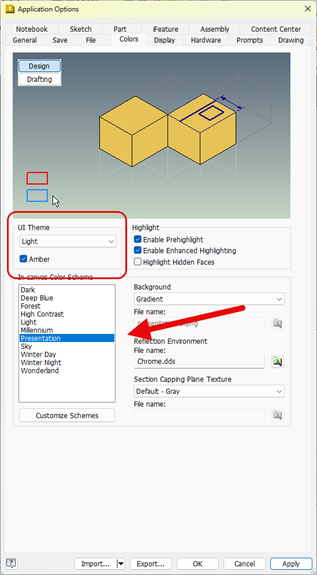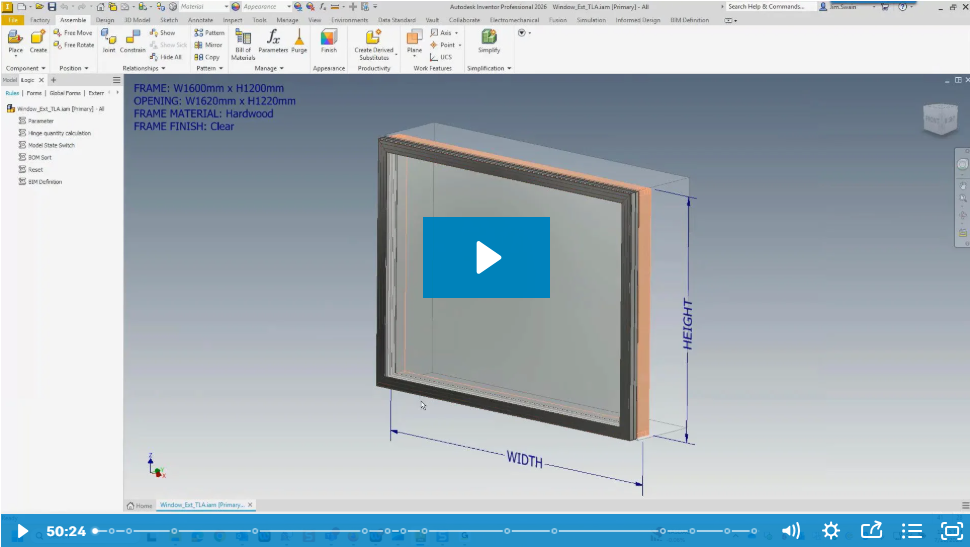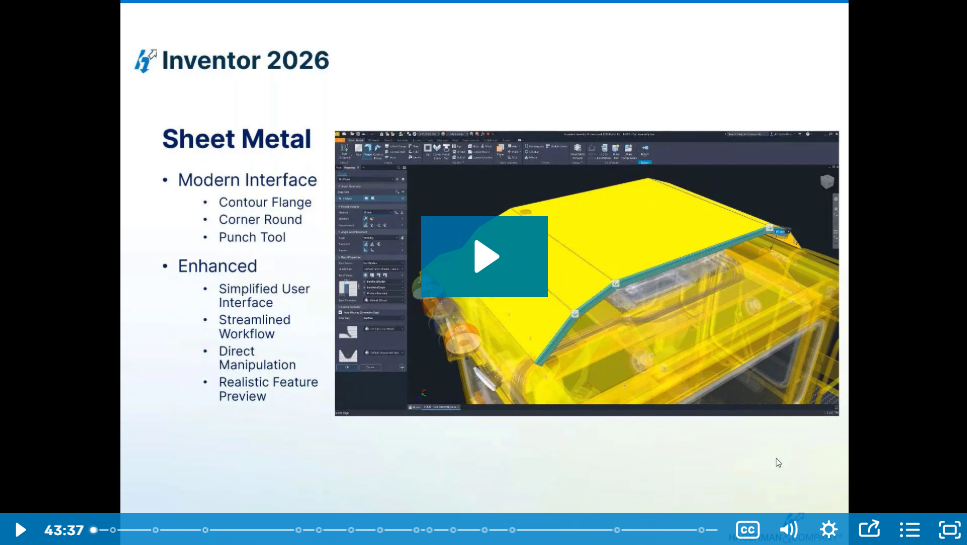Automation is reshaping the world, offering a lifeline to engineering and manufacturing leaders burdened by the complexities of modern design processes and the constant chase for innovation.
With 75% of business leaders anticipating at least a 25% boost in efficiency through automation, the race is on to overcome obstacles such as prolonged design cycles, disjointed communication across departments, and the high costs of manual errors.
These challenges, intensified by the pressure to stay competitive in rapidly evolving markets, demand strategic solutions that revolutionize how teams design, collaborate, and bring products to market.
CAD automation presents a transformative opportunity for companies to redefine their design and operational processes, ensuring they remain at the forefront of innovation and efficiency in a competitive landscape. In this article, we’ll take a look at a few of the ways that CAD automation can unlock unparalleled productivity and collaboration within your teams.
“CAD automation is more than an engineering tool for one person, it’s real automation that benefits the whole team. It helps people do things in minutes that used to take weeks.”
- Ken Christensen, Hagerman Director of Sales
CAD Automation Takes Digital Transformation to the Next Level
Adopting CAD automation within your company is more than just a simple operational upgrade. It’s a way to rethink the design and engineering process fundamentally. For leaders specifically, CAD automation allows you to optimize team efficiency, streamline resource allocation, and enhance project oversight.
While the industry's shift from paper to digital drawings marked the dawn of this transformation, CAD automation propels it forward by streamlining design processes and enhancing integration across departments. This advancement dramatically reduces the time and resources previously spent on manual and repetitive tasks, allowing companies to allocate more focus toward innovation and problem-solving.
Moreover, CAD automation enhances data flow between different stages of the design process. Its ability to update changes in real-time across all platforms minimizes errors and inconsistencies, leading to products moving from concept to production more efficiently, shortening engineering timelines, and enabling companies to adapt to market demands swiftly.
By fostering a culture where data-driven design and collaborative workflows are the norm, CAD automation transforms operational DNA, pushing productivity and innovation to new heights. For instance, when a design change is made, it can be instantly reflected across all related documents and models, ensuring that every team member is on the same page.
Customized Automation Features Lead to Faster Tool Usage
The suite of CAD tools Autodesk provides, like AutoCAD® and Inventor®, offer powerful automation capabilities through AutoLISP and iLogic, respectively.
These features empower users to streamline complex design processes, automate repetitive tasks, and customize software functionalities to meet unique project requirements. By leveraging AutoLISP or iLogic, professionals can unlock new levels of efficiency and innovation in their workflows.
“I’ve had to create designs where I had to create 2,500 user parameters, and I was able to write a short little line of code to generate those parameters and populate them–it’s just huge.”
- Real user quote from the Autodesk eBook, “Practical applications of design automation”
With AutoLISP engineers can tap into powerful automation benefits like:
-
Automating complex engineering calculations within the drawing environment, ensuring accuracy and saving time on manual computation.
-
Engaging with users for dynamic input during the design process, facilitating tailored solutions and smarter, context-aware automation.
-
Generating entities and completing drawings autonomously, from basic lines to intricate layouts, accelerating project timelines.
-
Directly manipulating the drawing database, allowing for the extraction, modification, and updating of data without manual intervention, enhancing data integrity and efficiency.
-
Executing external applications or scripts directly from AutoCAD®, streamlining workflows that involve multiple software ecosystems, leading to a cohesive project management experience.
Meanwhile, Inventor® iLogic brings its own powerful automation features like:
-
Automating the generation of essential documents and data for downstream processes, such as creating flat pattern DXFs for CNC machining, significantly reducing manual tasks and errors.
-
Dynamically adjusting model components, sizes, and features based on predefined rules, streamlining the design process, and ensuring that only manufacturable and accurate designs are produced.
-
Offering a customizable interface for simpler interaction with design rules, making it easier for users of all skill levels to produce optimized and validated models quickly.
-
Supporting the creation of rules ranging from simple task automation to complex, customized configurations, tapping into Inventor’s API for limitless automation potential, enhancing both productivity and innovation.
“To model an impeller manually took a couple of days previously. With the iLogic program, it takes about 15 minutes.”
- Real user quote from the Autodesk eBook, “Practical applications of design automation”
The bottom line is that automation technology like AutoLISP and iLogic in Autodesk CAD tools boosts productivity by automating routine tasks. This shift frees teams to focus on innovation and solving complex problems, enhancing speed, reducing costs, and improving design quality. These tools also embed engineering knowledge directly into designs, ensuring efficiency and manufacturability.
Hagerman & Company offers professional services including training, support, mentoring, project scoping, and design automation development for these innovative tools. Whether you're struggling with time-consuming manual design processes or inconsistent project outcomes, we can help your team harness CAD automation for peak performance.
Upgrading Legacy Technology for Automation Leads to Better Productivity
So you’re ready to tap into the benefits of modern CAD automation. Now what?
Start by revisiting your equipment. For example, are your systems advanced enough to handle this new technology? If not, this is an opportunity to upgrade legacy equipment across the board.
Outdated systems are not just slow; they obstruct seamless integration and are prone to data inaccuracies, acting as major barriers to efficiency and innovation. New hardware and CAD tools, on the other hand, simplify data management and document control.
On the manufacturing floor, integrating contemporary equipment with CAD systems enhances efficiency. For instance, replacing manual machinery with tools compatible with digital data enables direct programming from CAD designs. This compatibility ensures that companies can optimize their engineering and design processes, creating a more unified and efficient ecosystem.
And in the engineering department, adopting CAD automation streamlines workflows, empowering engineers with tools like AutoLisp and Inventor® iLogic to automate routine tasks and focus on innovation. This change not only boosts creativity but also accelerates design and development, enabling quicker iterations and tailored solutions, ultimately shortening product time-to-market.
“It’s a chicken and the egg situation – which upgrade comes first? Engineering or the shop floor equipment? The short answer is they must both come first.”
- Ken Christensen, Hagerman Director of Sales
Hagerman: Your Partner in Automating the Future
In today’s complex landscape of modern design and manufacturing, operational efficiency is a paramount concern for leaders. Prolonged design cycles, fragmented communication, and the cost of inaccuracies present formidable challenges to overcome.
CAD automation, when done properly, can herald these obstacles into opportunities for streamlined workflows and enhanced team collaboration. By reducing the reliance on manual input and fostering a culture of data-driven decision-making, CAD automation enables organizations to swiftly adapt to market demands and maintain a competitive edge.
Hagerman & Company stands ready to guide your team through the intricacies of CAD automation, ensuring you can navigate the shift from traditional methods to advanced, automated solutions. Whether tackling the inefficiencies of manual design tasks or the complexities of integrating new technologies, our expertise in AutoLISP, iLogic, and Autodesk® tools equips your team with the capabilities to achieve operational excellence
Let us partner with you in redefining productivity and driving innovation within your organization, ensuring your team not only keeps pace with the evolving industry but sets the standards for the future.





Comments